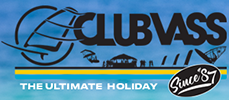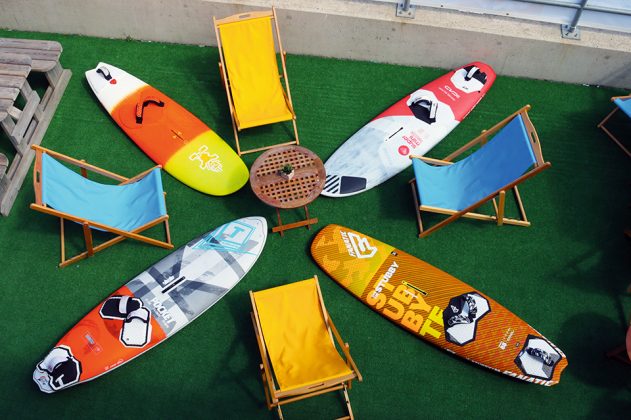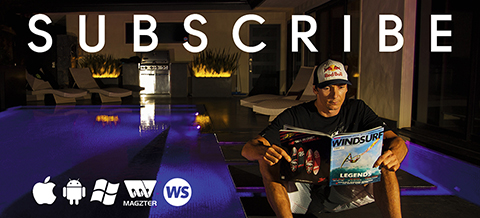SMALL AND PERFECTLY FORMED?
STUBBY WAVE BOARD TEST 2017
Test Editor Tris Best // Second Testers Maurin Rottenwalter,
Dan Hallam & Julia Slack
Photos Tris Best // Test Location Gwithian and The Bluff, Cornwall
Twelve months on from our first compact wave board test and we’re back again with three new designs for the 2017 season, plus one unchanged model that seemingly set the benchmark in the category for 2016. And yet, as we discussed in our test article last year (Issue 350, October ’15), making boards short and compact is nothing new in the wave category, stemming as far back as 2004. So what, if anything, has been learnt in the last year? We sent our test team out on the road, loaded with the new boards, to find out.
This test was originally published in the September 2016 issue.
There are a couple of major brands that have been late to market with their compact wave board offering … whilst it is notable that there are still some other major brands missing from the line-up. Read the blurbs for the Quatro and Tabou and both site years of R&D, getting their designs right, hence the delay. The cynics amongst us would argue that they’re simply jumping on the bandwagon for fear of being left behind, and are merely after their slice of the cake. And yet their inclusion this year speaks volumes about the longevity of the concept. Surely five design houses can’t be wrong? Unlike the Naish Hybrid back in 2004 that was left a loner on the market, hung out to dry, there are plenty of interpretations out there for the new season, each trying to do their part to cement the concept into range regularity. Indeed, several have gone a step further and evolved the concept for the crossover discipline as well. So have the new kids on the block brought something to rave about or do the findings from last year still apply?
FINDINGS
The conclusion from last year’s compact wave test was that by making the boards more compact, their trim and stance has been moved backwards, making their fin, deck-plate and footstrap placements increasingly critical. Whilst we’d still stand by that statement for this year’s contenders, we’d also like to point out that most of these compact designs are actually surprisingly manageable and easy to sail. Movement of their fins’ positions, their straps placement, or the location of the deckplate in the track can significantly alter the balance and feel of the board. Yet treat them much as you would do a conventional design and they track incredibly well, and more importantly respond naturally as power is supplied. There are many visible differences amongst the group, but look closely and you can spot some subtle similarities as well. All have relatively wide tail widths, helping to account for the rider’s rearward stance position and providing the traction and float to push power into the tail whilst planing. It also has the advantage of making the boards more forgiving to use. Their outlines are more parallel as a result, reducing their waterline and aiming to increase efficiency and speed. The two new brands to the party, Quatro and Tabou, stopped short of emphasising their boards’ parallel outline by inclusion of a square nose, preferring to opt for more traditional nose shapes, be it for purely visual aesthetics or otherwise. And that might just be the key to the stubbies becoming commonplace along our wave-beaten shores. When you push too far away from convention, you have to be pretty certain that your product offers something raw and inspiring for it to take off; otherwise you are left exposed to a torrent of ridicule as simply the purveyor of the latest fad. This year’s swelling category vindicates last year’s compact designs and by mixing visual elements of new and old may well help to convince the die-hard traditionalist of their merits.
SUMMARY
Both the Fanatic and Tabou turn off the back foot during the wave-ride, yet that is where their similarities end, possessing very different characters. The Fanatic still steals the show as the all-rounder in the group – being as much fun as a coastal bump and jump board as it is on the wave. Its early planing, acceleration and blend of liveliness and control can’t help but inspire the rider to push their own boundaries. If its outline is just too unseemly for you to bear, the Tabou could be an easier pill to swallow. It is undoubtedly more wave-specific, yet has an easy, planted character with such a quick response that it will make a novice wave sailor feel like they’re Graham Ezzy incarnate. The Quatro’s stance is placed further forward on the board, and once time had been spent getting used to it, was a potent machine around a break, leaning more forward into the bottom turn to keep the board driving on its rail. Its potential is unquestionable, although it is certainly no ‘plug and play’ cruiser. That leaves the Starboard – the most surfboard natured platform we think we have ever been on. It is certainly quicker than its predecessor and like-for-like planes as early as most in this group. Still, with its thin tapered rails, naturally wide stance and quad fin setup, it grips the water like no other, providing the smoothest ride and allowing the pilot to really feel the wave, interpreting it how they wish. It remains a wave-specialist tool, yet is infinitely more accessible … and enjoyable for 2017.
Note: The JP board was submitted after the original test deadline but is included in the line up as a catch up test.
THE LINE-UP



